Introduction to Tutankhamun and his Reign
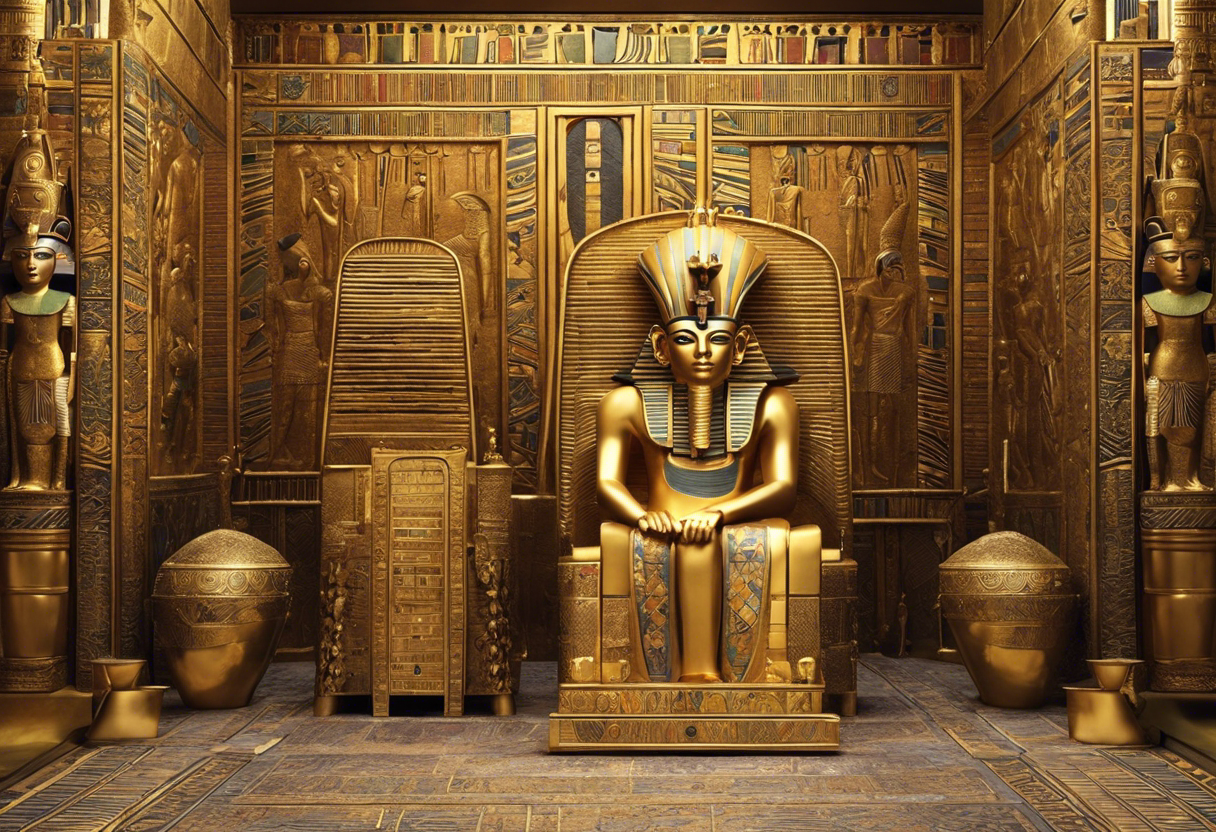
Tutankhamun is one of the most famous pharaohs of ancient Egypt. He ruled during the 18th dynasty, from about 1332 to 1323 BC, and his reign is often referred to as the "boy king" period due to his young age at the time of ascending to the throne. Tutankhamun became pharaoh at just nine years old, after the death of his father, Akhenaten. Despite his relatively short reign, Tutankhamun left behind a significant legacy that has captivated the world for centuries.
Tutankhamun's reign was characterized by a return to traditional Egyptian religious beliefs and practices. His father, Akhenaten, had introduced a monotheistic worship of the sun god Aten, which was a radical departure from the polytheistic beliefs that were deeply rooted in Egyptian society. Upon assuming power, Tutankhamun reversed many of his father's policies, restoring the traditional gods and goddesses and temples.
The most intriguing aspect of Tutankhamun's reign stems from the discovery of his tomb in the Valley of the Kings in 1922 by archaeologist Howard Carter. The tomb was found mostly intact and contained a vast array of treasures, including beautiful jewelry, furniture, chariots, and numerous funerary objects. However, it was the discovery of Tutankhamun's mummy and the stunning gold burial mask that truly captivated the world's attention.
The treasures found in Tutankhamun's tomb provided valuable insights into the royalty and burial practices of ancient Egypt. The lavishness of the tomb indicated the immense wealth and power of the pharaoh, while the artifacts showcased the exceptional artistry and craftsmanship of the time. The discovery of the burial mask, in particular, became an iconic symbol of ancient Egypt and solidified Tutankhamun's place in history as one of its most iconic figures.
Despite the initial excitement surrounding the discovery of Tutankhamun's tomb, the mystery surrounding his death remains unresolved. Many theories have been proposed, ranging from an accident to foul play, but no conclusive evidence has been found to determine the exact cause of his demise. Regardless, Tutankhamun's reign and the subsequent discovery of his tomb have provided invaluable insights into the rich history and culture of ancient Egypt.
In the following sections, we will delve deeper into the life and reign of Tutankhamun, exploring his family background, the significance of his tomb, and the impact his reign has had on the world. Through the examination of historical records, archaeological findings, and scholarly research, we aim to shed light on the enigmatic pharaoh and the enduring fascination he continues to hold.
Discovery of Tutankhamun's Tomb
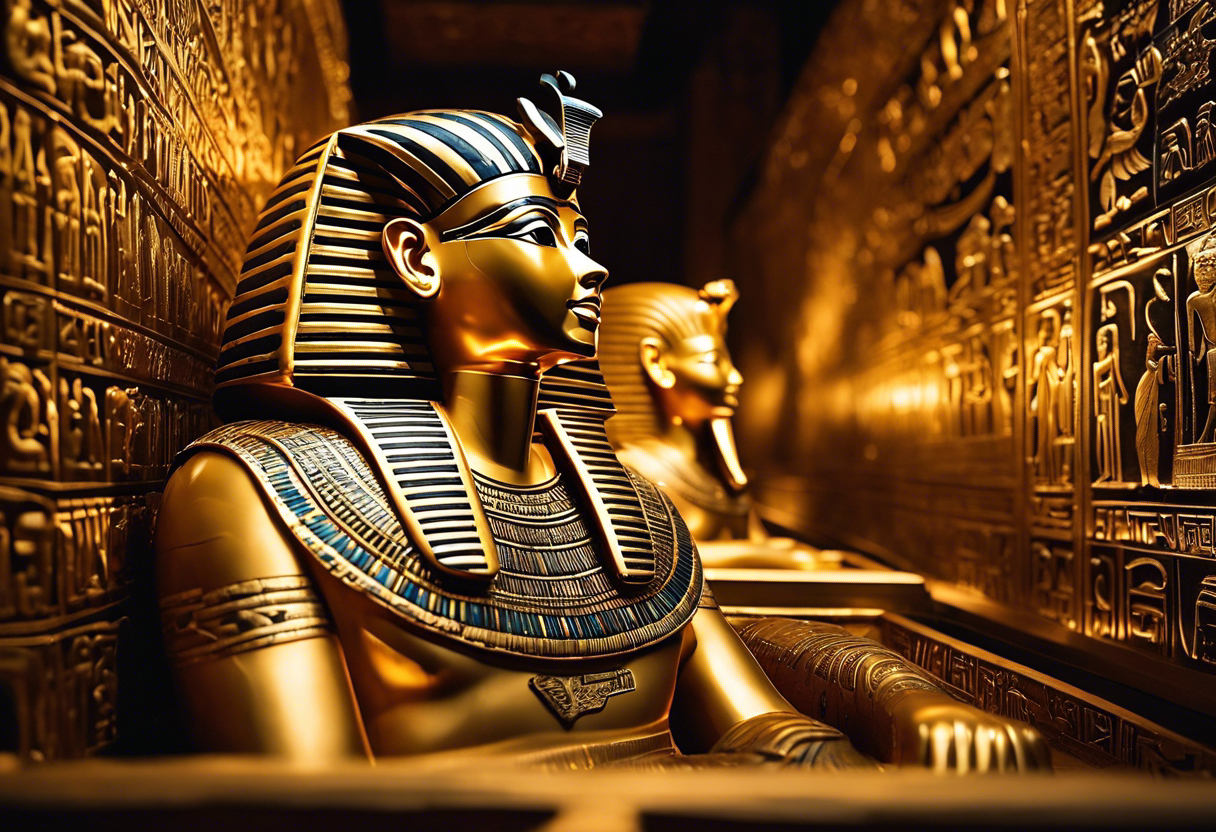
The discovery of Tutankhamun's tomb is one of the most significant archaeological finds in history. On November 4, 1922, British archaeologist Howard Carter and his team made a remarkable discovery in the Valley of the Kings in Egypt. They unearthed the virtually intact tomb of Tutankhamun, a pharaoh who ruled Ancient Egypt during the 14th century BCE.
Prior to this discovery, Tutankhamun was a lesser-known figure in Egyptian history. It was only through the careful excavation and examination of his tomb that the true extent of his reign and the wealth and splendor of Ancient Egypt came to light.
The journey towards the discovery started in 1907 when Carter began working in the Valley of the Kings. Over the years, he made several important archaeological finds, but it wasn't until 1922 that he stumbled upon the steps leading to Tutankhamun's tomb.
Excitement grew as Carter and his team worked tirelessly to uncover the treasures hidden within the tomb. Room after room revealed a breathtaking array of gold, precious jewels, exquisite artifacts, and the preserved remains of the young pharaoh himself. The tomb provided an unparalleled insight into the burial practices and beliefs of the ancient Egyptians.
One of the most iconic and significant artifacts found within the tomb was Tutankhamun's golden funerary mask. This stunning piece is considered a masterpiece of Egyptian art and has come to symbolize the magnificence and opulence of the Ancient Egyptian civilization.
The discovery of Tutankhamun's tomb attracted worldwide attention and sparked a renewed interest in ancient Egypt. It captured the imagination of people around the world and fueled a fascination with Egyptian history and culture that endures to this day.
However, the discovery also sparked controversy and debate. Some argued that the excavation and removal of the artifacts from the tomb should have been conducted with more care and sensitivity. The debate over the repatriation of the artifacts to Egypt continues to this day, with Egypt seeking the return of these treasures to their homeland.
Despite the controversy surrounding the excavation, the discovery of Tutankhamun's tomb remains a monumental achievement in the field of archaeology. It has provided valuable insights into the life and death of an ancient pharaoh and has contributed to our understanding of Ancient Egyptian civilization as a whole. The legacy of Tutankhamun continues to captivate and inspire people around the world, ensuring that his name and story will be remembered for generations to come.
The Curse of Tutankhamun
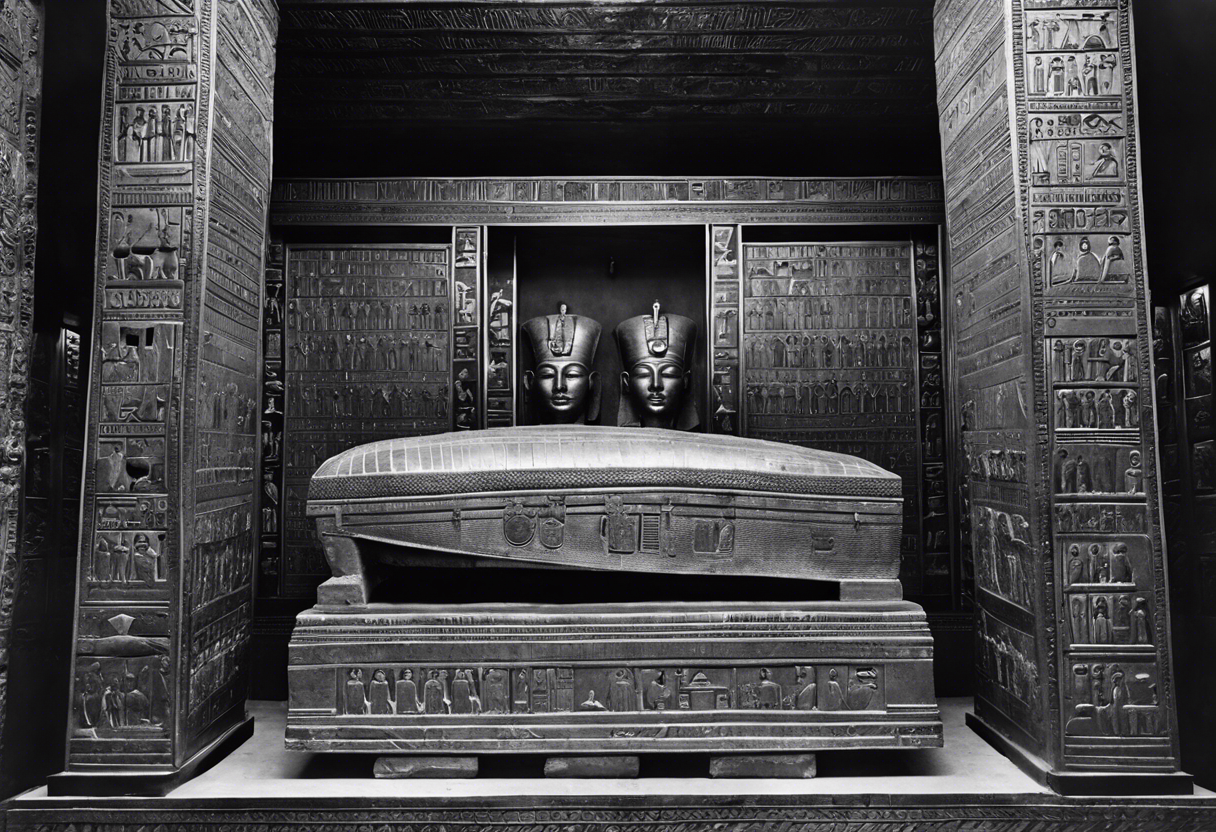
The Curse of Tutankhamun is an intriguing and controversial aspect of the ancient Egyptian pharaoh's legacy. After the discovery of Tutankhamun's tomb by Howard Carter in 1922, numerous stories of a curse spread like wildfire, capturing the imagination of people worldwide. This section delves into the origins, beliefs, and consequences attributed to the Curse of Tutankhamun.
Origins of the Curse
The origins of the Curse can be traced back to the unearthing of Tutankhamun's tomb in the Valley of the Kings. A series of unfortunate events that followed the discovery created a narrative of supernatural retribution. It was believed that disturbing the resting place of the young pharaoh would invoke a curse, bringing misfortune and death upon those involved.
Beliefs and Superstitions
The Curse of Tutankhamun was seen as a powerful force that could not be escaped. It was thought to target anyone who entered the tomb or even had a connection to the excavation. The beliefs surrounding the curse included warnings of immediate death, as well as illnesses, accidents, and financial ruin. These superstitions evoked fear and led to cautionary measures being taken by those involved in the expeditions.
Consequences and Controversies
The supposed consequences attributed to the Curse of Tutankhamun gained significant media attention and added to the fascination surrounding the young pharaoh's tomb. Mysterious deaths and unfortunate incidents involving individuals associated with the excavation fueled the belief in the curse. However, it is important to note that some of these incidents can be attributed to natural causes or coincidences.
The controversies surrounding the curse remain to this day. Skeptics argue that the curse was nothing more than sensationalism and a product of the fertile imaginations of the media and public. They propose that the tragedies that occurred could be explained by factors unrelated to any supernatural force.
The Legacy of the Curse
Despite the skepticism, the Curse of Tutankhamun continues to captivate the world. It has become an integral part of the pharaoh's story, adding an air of mystery and intrigue to his reign. The notion of a powerful and vengeful curse associated with a buried treasure lures inquisitive minds, fueling ongoing debates and research.
The fascination with Tutankhamun's curse has influenced popular culture, inspiring books, movies, and documentaries. The allure of a curse from the ancient world remains a captivating subject, keeping the legend of Tutankhamun alive and continually evoking curiosity about the mysteries of ancient Egypt.
Tutankhamun's Treasures and Artifacts
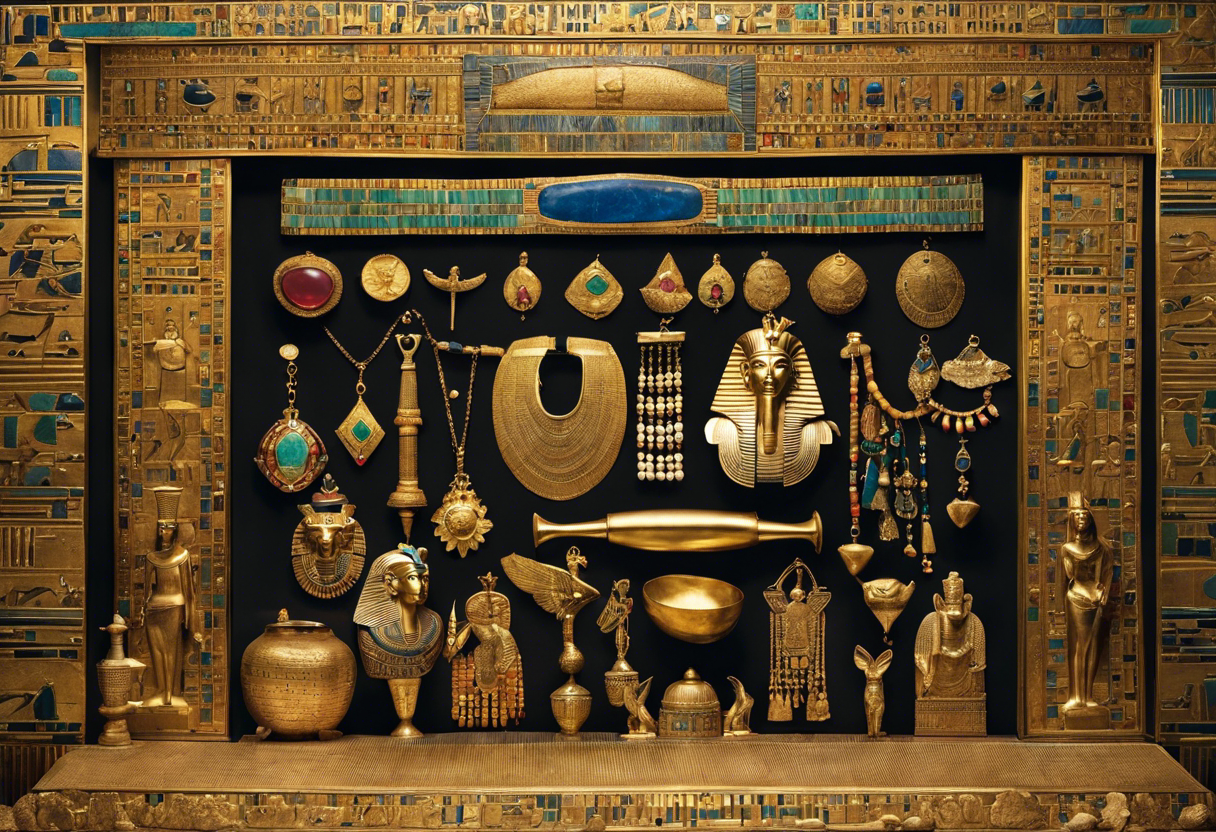
Tutankhamun, also known as the "Boy King," ruled Egypt during the 18th Dynasty of the New Kingdom from 1332 to 1323 BC. His brief reign left a lasting impact on history, not only for his young age at the time of his death but also for the remarkable treasures and artifacts found in his tomb.
The discovery of Tutankhamun's tomb by archaeologist Howard Carter in 1922 was one of the most significant archaeological findings of the 20th century. The tomb itself was a treasure trove of intricate artifacts, offering a glimpse into the opulence and grandeur of ancient Egyptian civilization.
Among the most notable treasures found in Tutankhamun's tomb was his golden burial mask. This masterpiece of ancient craftsmanship is considered one of the most iconic symbols of ancient Egypt. The mask, made of solid gold and adorned with precious gemstones, beautifully depicts the pharaoh's youthful features, emphasizing the idealized image of beauty in ancient Egyptian culture.
Beyond the burial mask, Tutankhamun's tomb contained numerous other treasures, including furniture, chariots, weapons, and jewelry. One of the most impressive pieces was the Golden Throne, intricately designed with semiprecious stones and gold. It reflected the power and authority of the pharaoh, serving as a symbol of his elevated status.
The tomb also contained a stunning collection of funerary objects, such as canopic jars, which held Tutankhamun's organs, and shabtis, small statues meant to serve the pharaoh in the afterlife. These artifacts were carefully crafted and intricately detailed, showcasing the skills and artistry of ancient Egyptian craftsmen.
Additionally, the walls of the tomb were adorned with beautiful paintings and hieroglyphic inscriptions, depicting scenes from the pharaoh's life and his journey to the afterlife. These vibrant and well-preserved artworks provide valuable insights into the religious beliefs and rituals of ancient Egypt.
The treasures found in Tutankhamun's tomb not only provided a wealth of knowledge about ancient Egyptian culture and beliefs but also captivated the world with their beauty and historical significance. They have been exhibited in museums around the globe, attracting millions of visitors who marvel at the splendor and sophistication of this ancient civilization.
The discovery of Tutankhamun's tomb and the treasures within it have shed light on the glories of the past and continue to fascinate archaeologists, historians, and enthusiasts alike. They serve as a testament to the enduring legacy of Tutankhamun, the pharaoh who captivated the world with his treasures and artifacts.
Theories Surrounding Tutankhamun's Death
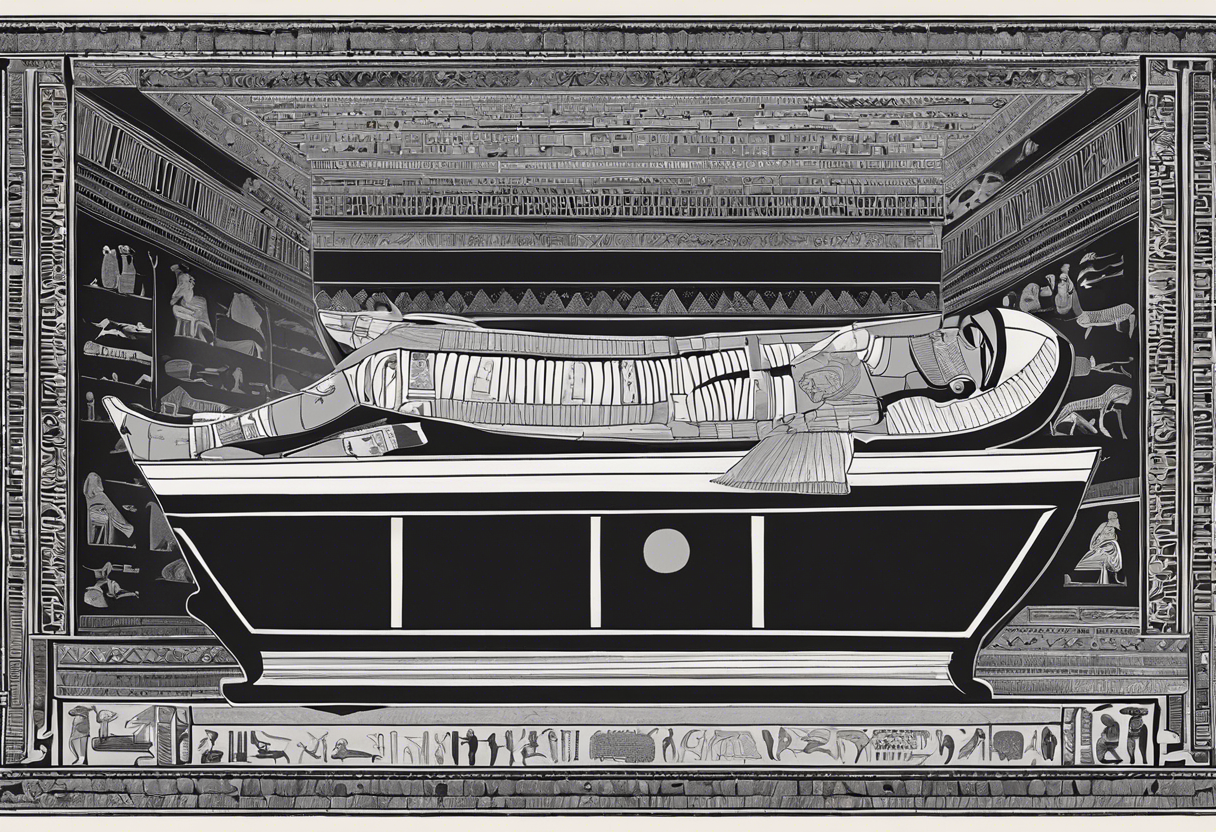
The death of Pharaoh Tutankhamun has long been shrouded in mystery, with numerous theories proposed over the years to explain the young ruler's untimely demise. While the exact cause of his death remains uncertain, researchers and historians have put forth several hypotheses based on the available evidence and scientific analysis.
One leading theory suggests that Tutankhamun died as a result of a chariot accident. This theory is based on the presence of the pharaoh's damaged ribs and the discovery of chariot parts in his tomb. It is believed that Tutankhamun may have been an inexperienced charioteer and suffered a fatal collision while riding in a chariot. However, this theory has faced criticism as the severity of Tutankhamun's injuries does not necessarily correspond to a chariot accident.
Another theory proposes that Tutankhamun died from complications resulting from a broken leg. X-rays of the pharaoh's mummy revealed a fracture in his left leg, which some experts argue could have led to a life-threatening infection or other health issues. This hypothesis is supported by the presence of canes and walking sticks found in Tutankhamun's tomb, suggesting that he may have struggled with mobility.
Additionally, some researchers have suggested that Tutankhamun may have died from a genetic disorder. Analyses of his DNA have indicated that he had a malformed foot, which could be indicative of a genetic condition. Conditions such as Kohler's disease or Marfan syndrome have been proposed, but more research is needed to confirm these theories.
There is also an intriguing theory that Tutankhamun was murdered. The presence of a small hole in the pharaoh's skull has led some to speculate that he was struck on the head, potentially indicating foul play. Furthermore, high levels of toxins, including arsenic, have been found in Tutankhamun's remains, raising suspicions of poisoning. However, these findings are debated, and conclusive evidence of murder has not been established.
Despite the abundance of theories surrounding Tutankhamun's death, the full truth may never be known. The limitations of available evidence and the passage of time make it challenging to definitively determine the cause of his untimely demise. Nevertheless, ongoing research and technological advancements may continue to shed light on this ancient mystery, offering new insights into the life and death of the boy pharaoh.
Note: The article does not intend to present any one theory as definitive or conclusive. The purpose is to provide an overview of the different theories proposed by researchers and historians.
Tutankhamun's Legacy and Impact on Egyptology
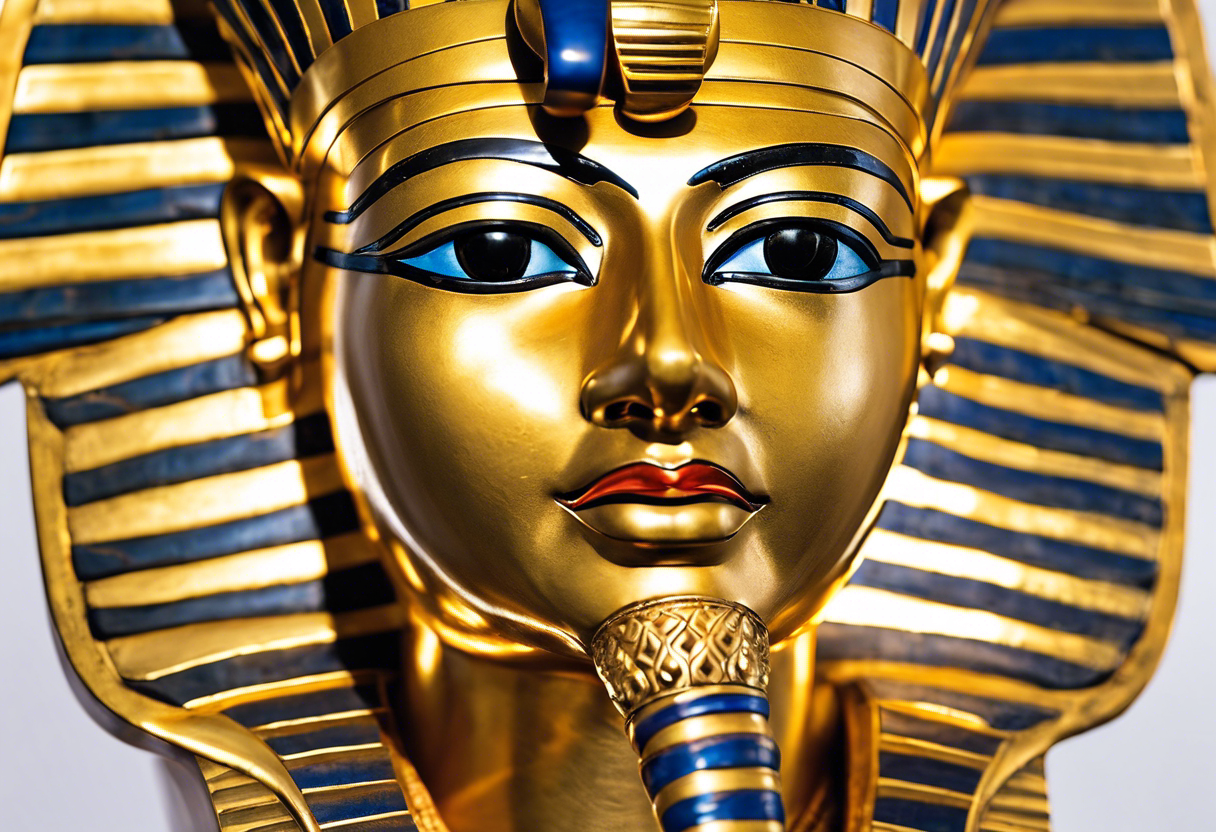
Rediscovery and Popularity:
Tutankhamun's legacy began with the discovery of his intact tomb by archaeologist Howard Carter in 1922. This monumental find sparked worldwide fascination and marked a turning point in the field of Egyptology. The tomb's remarkable preservation, as well as the wealth of treasures it contained, provided invaluable insights into ancient Egyptian culture and daily life.
The media frenzy surrounding the discovery further elevated Tutankhamun to iconic status, making him a household name. The public's fascination with the pharaoh's tomb inspired a wave of Egyptomania in popular culture, influencing art, fashion, and design.
Historical Significance:
Tutankhamun's reign was relatively short-lived, and he is often considered a minor pharaoh in terms of political achievements. However, his place in history became significant due to the circumstances surrounding his reign and his untimely death. He ascended the throne at a young age, and his rule marked a period of transition and restoration in Egypt following the religious upheaval of his predecessor, Akhenaten.
The circumstances of Tutankhamun's death remain a subject of debate among experts, but theories suggest he may have died from an injury or illness. The discovery of his tomb provided valuable information about ancient burial practices and religious beliefs, shedding light on the significance of the afterlife in Egyptian culture.
Influence on Egyptology:
Tutankhamun's tomb and its contents have had a lasting impact on the field of Egyptology. The meticulous documenting and recording of the tomb's treasures contributed to the development of modern archaeological practices and techniques. The sheer number of artifacts found within the tomb provided Egyptologists with a wealth of information about the craftsmanship, symbolism, and materials used in ancient Egyptian art.
The study and analysis of Tutankhamun's tomb and its artifacts have deepened our understanding of ancient Egyptian society, religion, and the role of pharaohs. Scholars continue to unravel the secrets of the tomb, exploring its historical context and the significance of its contents.
Educational and Cultural Significance:
Tutankhamun's legacy extends beyond the realm of academia. The global interest in his story has led to numerous exhibitions, both in Egypt and around the world, showcasing replicas or original artifacts from his tomb. These exhibitions have not only allowed a wider audience to appreciate the beauty and craftsmanship of ancient Egyptian art, but they have also sparked curiosity and inspired new generations of Egyptologists.
In Egypt, Tutankhamun's legacy has contributed to the growth of tourism. The pharaoh's tomb and other ancient sites continue to attract millions of visitors each year, bolstering the country's economy and cultural heritage.
Furthermore, the study of Tutankhamun's reign and the exploration of his tomb have highlighted the importance of preserving cultural heritage globally. The conservation and protection of ancient sites and artifacts have become paramount in ensuring the continuity of our understanding of human history.
Continued Discoveries:
Tutankhamun's legacy continues to unfold, even almost a century after the discovery of his tomb. Ongoing research and technology advancements have allowed for the reexamination of the artifacts and the use of non-invasive methods to explore the tomb further.
New discoveries and insights regarding Tutankhamun's life and the era in which he lived continue to emerge, contributing to the ever-evolving field of Egyptology. These discoveries reinforce the enduring impact of Tutankhamun and his reign on our understanding of ancient Egypt.
Modern Day Fascination with Tutankhamun
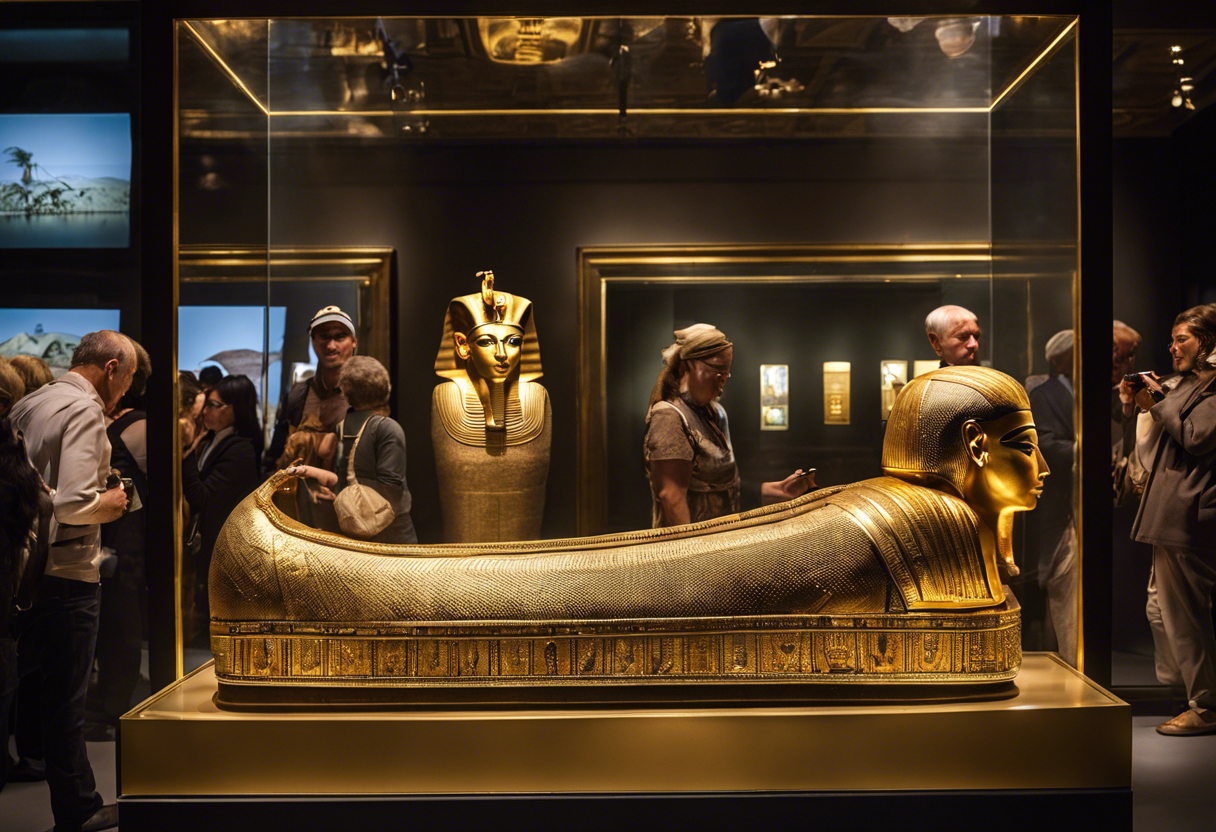
Since its discovery in 1922, the tomb of Tutankhamun has continued to captivate the world. Even nearly a century later, the allure and fascination surrounding this ancient Egyptian pharaoh remain strong. Countless scholars, archaeologists, and historians have dedicated their lives to unraveling the mysteries of Tutankhamun and his reign. Furthermore, the general public has shown an overwhelming interest in this young pharaoh and his lavish burial treasures.
One of the main reasons for the enduring fascination with Tutankhamun is the sheer splendor of his tomb and burial artifacts. When British archaeologist Howard Carter stumbled upon the tomb in the Valley of the Kings, he unearthed a wealth of treasures, including golden furniture, jewelry, chariots, and ceremonial masks. These astonishing finds provided a rare glimpse into the opulence of life in ancient Egypt and sparked public interest worldwide.
Another aspect that contributes to the modern-day fascination with Tutankhamun is the mysterious circumstances surrounding his life and death. Tutankhamun became pharaoh at the young age of nine, and his reign was relatively short-lived, lasting only around ten years. His sudden and untimely death at such a young age has fueled speculation and theories about possible foul play, medical conditions, and the political climate of the time. This air of mystery surrounding Tutankhamun's life adds depth to the fascination and keeps researchers and enthusiasts engaged in ongoing debates and investigations.
Furthermore, the impact of Tutankhamun's discovery on popular culture cannot be overlooked. The media frenzy that accompanied the opening of the tomb in the 1920s and the subsequent worldwide exhibitions of the artifacts have left a lasting impression. Countless books, documentaries, movies, and even fashion trends have been inspired by the story of Tutankhamun. The famous golden death mask of Tutankhamun, with its iconic image of the pharaoh, has become synonymous with ancient Egypt itself.
The fascination with Tutankhamun also stems from the wider interest in ancient Egyptian history and culture. Ancient Egypt has always held a mysterious and awe-inspiring allure, with its grand pyramids, elaborate burial practices, and intricate hieroglyphs. Tutankhamun, as one of the most well-preserved and enigmatic pharaohs, acts as a gateway into this ancient world, capturing the imagination of those eager to explore the rich history and mythology of Egypt.
In conclusion, the modern-day fascination with Tutankhamun can be attributed to various factors, including the magnificence of his tomb and artifacts, the mysteries surrounding his life and death, the media attention he received, and the wider interest in ancient Egypt. The enduring fascination with Tutankhamun serves as a testament to the enduring allure of ancient civilizations and the human thirst for knowledge and exploration.
Tutankhamun's Influence on Popular Culture
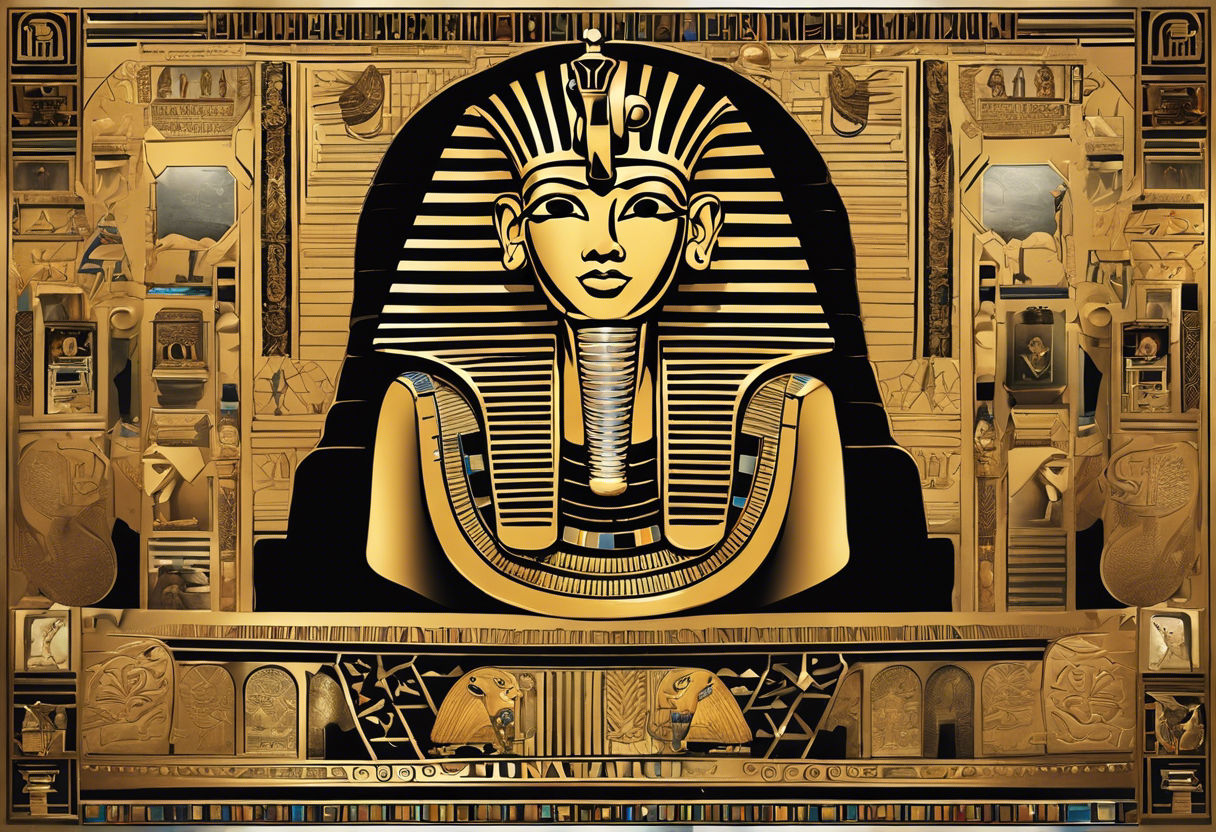
Tutankhamun, the ancient Egyptian pharaoh, has had a profound influence on popular culture throughout the years. From the moment his tomb was discovered in 1922 by British archaeologist Howard Carter, Tutankhamun captured the imagination of the world and sparked a fascination with ancient Egypt that continues to this day. His impact on popular culture can be seen in various forms, from art and fashion to film and music.
One of the most notable ways in which Tutankhamun has influenced popular culture is through art and design. His iconic golden burial mask, with its stunning craftsmanship and exquisite detail, has become a symbol of ancient Egypt and is often reproduced in various forms of art. It has inspired numerous paintings, sculptures, and jewelry designs, and its image has been reproduced on a wide range of products, from posters and postcards to T-shirts and home decor items.
Additionally, Tutankhamun's tomb and the treasures found within it have inspired fashion trends and designs. The striking colors and intricate patterns seen in the pharaoh's burial chamber have influenced the fashion industry, with Egyptian-inspired motifs appearing in clothing, accessories, and even runway collections. Designers have drawn inspiration from Tutankhamun's extravagant lifestyle and opulent style, incorporating elements of ancient Egyptian aesthetics into their creations.
Tutankhamun's influence on popular culture extends beyond the realm of art and design. It has also had a significant impact on the world of film and entertainment. The story of the young pharaoh and the discovery of his tomb has been the subject of numerous documentaries, movies, and TV series. These portrayals have helped to popularize the myth of the "Curse of the Pharaohs" and have sparked the public's curiosity about ancient Egypt and its rulers.
In the music industry, Tutankhamun's influence can be seen through various references to ancient Egypt in song lyrics and album artwork. Artists have often drawn inspiration from the mystique and allure of pharaohs, incorporating Egyptian themes and imagery into their music videos and stage performances. Tutankhamun's name has become synonymous with mystery and royalty, making it a popular choice for song titles and album names.
Overall, Tutankhamun's influence on popular culture is undeniable. His discovery and the treasures found in his tomb have captivated the world and continue to inspire artists, designers, filmmakers, and musicians. The enduring fascination with ancient Egypt that he ignited almost a century ago is a testament to the enduring legacy of this remarkable pharaoh.
Controversies and Debates Surrounding Tutankhamun
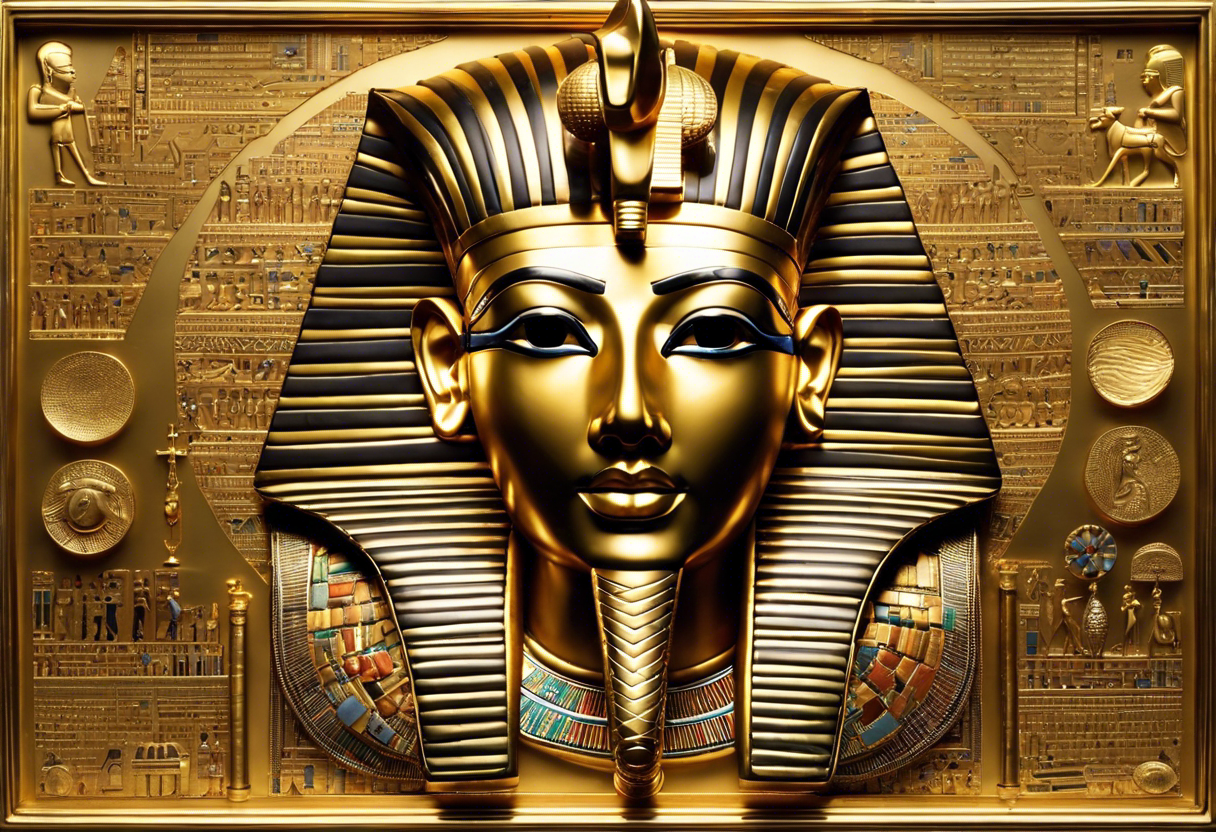
Tutankhamun, commonly known as King Tut, continues to capture the imagination of the world even after thousands of years. However, there are several controversies and debates surrounding this famous pharaoh, which further add to the intrigue and mystery surrounding his life and reign.
One of the main controversies surrounding Tutankhamun is the cause of his death. When his tomb was discovered in 1922 by Howard Carter, it became clear that Tutankhamun had died at a young age. However, the exact circumstances leading to his demise have been a subject of debate among Egyptologists. Some theories suggest that he died due to complications from a leg fracture, while others propose that he succumbed to malaria or other infectious diseases. Further studies and scientific analysis have been conducted in recent years to shed light on this enigma.
Another controversial aspect of King Tut's reign is his parentage. Tutankhamun's father is believed to be Akhenaten, the pharaoh associated with the religious shift to Atenism. However, the identity of his mother is still a matter of speculation. Some historians argue that it was Nefertiti, the principal wife of Akhenaten, while others propose that it might have been a lesser-known queen or even one of Akhenaten's sisters. The lack of conclusive evidence has fueled ongoing debates among scholars seeking to unravel Tutankhamun's lineage.
Moreover, Tutankhamun's short reign and relatively young age at the time of his death raise questions about the extent of his power and influence as a pharaoh. Some experts argue that he was merely a puppet ruler, overshadowed by the powerful priests and advisors who held the true political power during his reign. However, others contend that Tutankhamun played a more significant role in the restoration of traditional Egyptian religion after the controversial reign of his father, Akhenaten.
Perhaps one of the most debated aspects of Tutankhamun's legacy is the alleged curse associated with his tomb. After the opening of his burial chamber, numerous individuals involved in the excavation and study of the tomb reportedly suffered untimely deaths. While some considered this a mere coincidence, others believed in the existence of a curse placed upon anyone who disturbed the pharaoh's rest. Nonetheless, scientific studies have since debunked the curse theory, attributing the unfortunate incidents to natural causes or psychological factors.
In conclusion, Tutankhamun's life and reign continue to spark controversies and debates among scholars and historians. From the mystery surrounding his cause of death and parentage to speculations about his political power and the alleged curse of his tomb, the fascination with King Tut shows no signs of waning. As advancements in technology and research techniques continue to unfold, perhaps more insights into the life of this iconic pharaoh will eventually be revealed.
Conclusion: Tutankhamun's Enduring Mystique
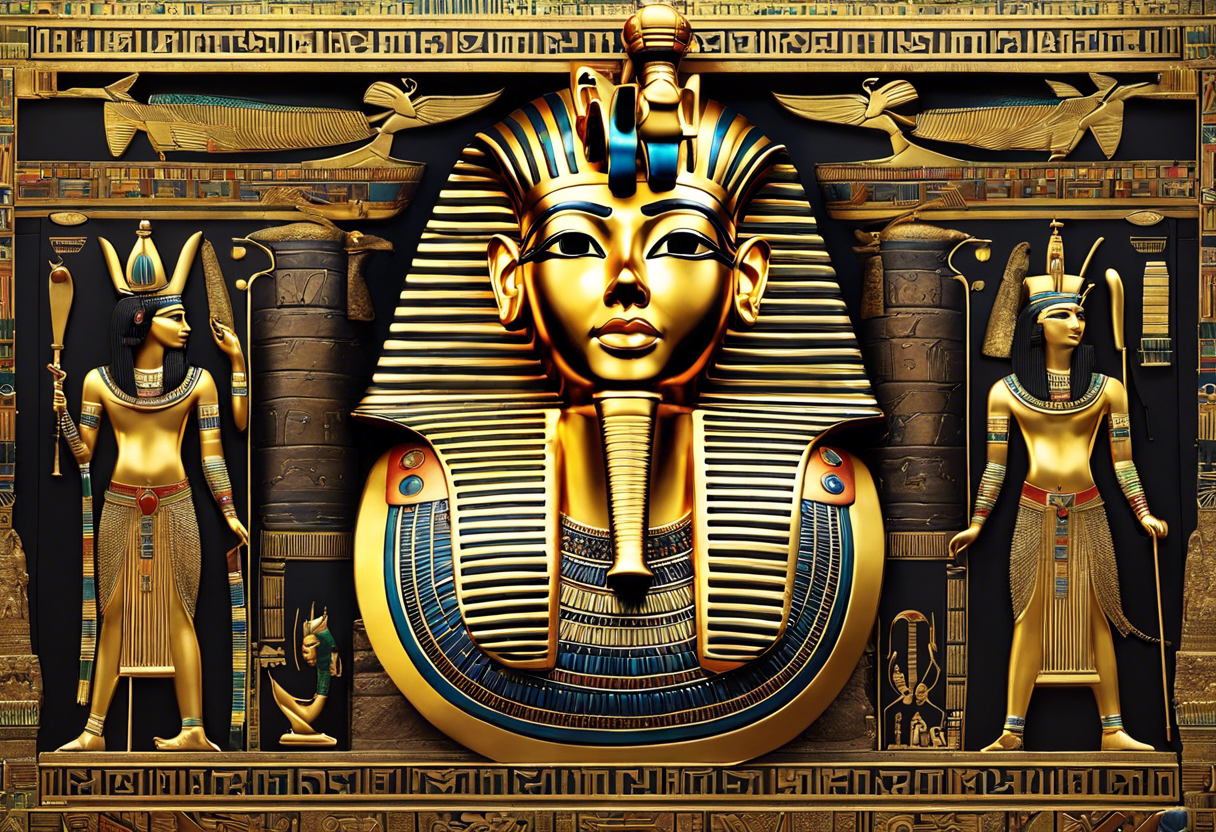
Throughout history, Tutankhamun has captivated the world with his intriguing story and remarkable tomb. His enduring mystique continues to fascinate scholars, historians, and everyday people alike. In this article, we have explored the life of this young pharaoh and the significance of his reign.
Tutankhamun's reign may have been relatively short-lived, but his impact on ancient Egypt and its subsequent fascination with his legacy cannot be underestimated. His tomb, discovered by Howard Carter in 1922, provided an unprecedented glimpse into the treasures and riches of the ancient world, sparking a wave of Egyptomania and shaping the field of Egyptology forever.
One of the key reasons behind Tutankhamun's enduring mystique is the extraordinary wealth and ingenuity displayed in his tomb. The intricate craftsmanship of the artifacts, the vast quantities of gold and precious stones, and the attention to detail showcased the opulence and grandeur of his reign. Furthermore, the fact that his tomb remained largely untouched by grave robbers for thousands of years only added to the allure.
Another factor contributing to Tutankhamun's lasting appeal is the mysterious circumstances surrounding his death. Despite advancements in forensic science, the exact cause of his premature demise at around the age of 19 remains unclear. The theories range from natural causes to accidents, assassination, or even a chariot crash. This uncertainty surrounding his death has fueled speculation and intrigue, further enhancing his fame.
Moreover, the symbolism attached to Tutankhamun and his role as a restored king resonates with audiences. As the boy-king who ascended to the throne at a tender age, his reign marked a period of restoration and stability after the controversial reign of Akhenaten. His youth, coupled with the notion of a divine ruler, adds an element of romanticism to his story.
The international exhibitions showcasing Tutankhamun's treasures have also played a significant role in perpetuating his enduring mystique. These exhibitions, which have traveled to cities around the world, have allowed millions of people to observe the artifacts firsthand, immersing themselves in the world of ancient Egypt and becoming captivated by the mystery and magnificence of Tutankhamun's world.
In conclusion, Tutankhamun's enduring mystique can be attributed to several factors, including the extraordinary wealth and craftsmanship displayed in his tomb, the mysterious circumstances surrounding his death, the symbolism attached to his reign, and the impact of international exhibitions. As we continue to unravel the mysteries of ancient Egypt, Tutankhamun stands as a timeless figure, forever captivating the world with his extraordinary story and legacy.
